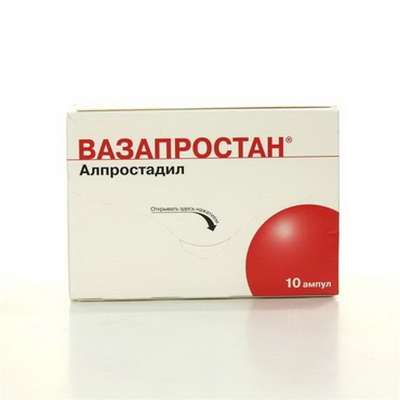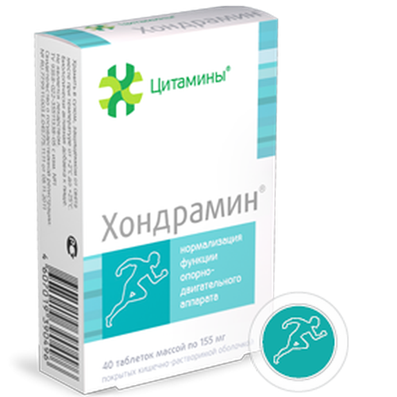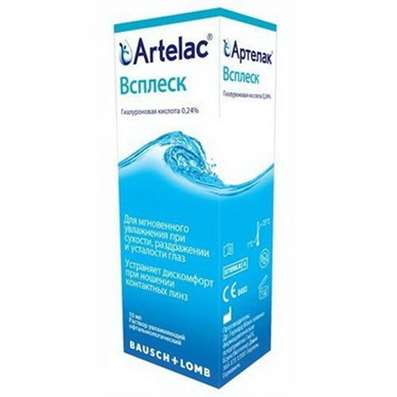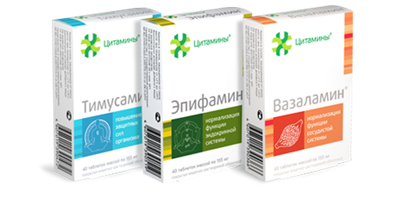Instruction for use: Godasal
I want this, give me price
Active substance Asetylsalicylic acid + Glycine
ATX Code B01AC06 Acetylsalicylic acid
Pharmacological groups
NSAIDs - Salicylic acid derivatives in combinations
Antiaggregants in combinations
Nosological classification (ICD-10)
G45.9 Transient cerebral ischemic attack, unspecified
Acute cerebrovascular insufficiency, Spasm of cerebral vessels, Cerebral spastic syndrome, Spasm of the arteries of the brain, Spasm of cerebral vessels
I20.0 Unstable angina
Unstable angina, heberden disease
I21.9 Acute myocardial infarction, unspecified
Changes in the left ventricle with myocardial infarction, Changes in the left atrium with myocardial infarction, Myocardial infarction, Myocardial infarction without Q wave, Myocardial infarction without signs of chronic heart failure, Myocardial infarction with unstable angina, Pirouette tachycardia with myocardial infarction
I22 Recurrent myocardial infarction
Atherosclerosis and the likelihood of recurrent myocardial infarction, Myocardial infarction repeated, Relapses of myocardial infarction
I26 Pulmonary embolism
Recurrent thromboembolism of the pulmonary artery, Recurrent pulmonary embolism, Thromboembolism of the branches of the pulmonary artery, Thromboembolism of the lungs, Thromboembolism of the pulmonary artery (PE), Pulmonary artery thrombosis, Thromboembolism, Thromboembolism of the pulmonary artery, Thromboembolism, Pulmonary embolism, Thromboembolism of the pulmonary artery and its branches, Thromboembolism of pulmonary vessels, Embolism of the lung, Embolism of the pulmonary artery, Acute massive thromboembolism of the pulmonary artery
I64 Stroke, not specified as hemorrhage or infarction
Primary stroke, Stroke, Stroke in the course of, microstroke, stroke, The completed stroke
I74.9 Embolism and thrombosis of unspecified arteries
Arterial embolism, Arterial thrombosis, Acute arterial thromboembolism, Acute Vascular Occlusion, Acute occlusion of arteries, Acute arterial thrombosis, Acute thrombosis, Acute thrombosis of peripheral arteries, Thrombosis, Thrombosis in the extracorporeal circulation, Thrombosis of peripheral arteries, Peripheral vascular thrombosis, Shunttromboz, Embolism, Embolism of peripheral arteries, Occlusive Artery Disease
I82.9 Embolism and thrombosis of unspecified vein
Venous embolism, Venous thrombosis, Diseases caused by blood clots in the vessels, Acute Vascular Occlusion, Acute venous thrombosis, Acute thrombosis of veins, Thrombosis, Thromboembolism, Phlebothrombosis, Embolism
Z100 * CLASS XXII Surgical practice
Abdominal surgery, adenomectomy, Amputation, Coronary angioplasty, Angioplasty of the carotid arteries, Antiseptic skin treatment for wounds, Antiseptic Hand, Appendectomy, atherectomy, Balloon coronary angioplasty, Vaginal hysterectomy, The coronary bypass, Interventions in the vagina and cervix, Interventions on the bladder, Intervention in the mouth, Restoration and reconstructive surgery, Hand hygiene of medical personnel, Gynecologic surgery, Gynecological intervention, Gynecological surgery, Hypovolemic shock during operations, Disinfection of purulent wounds, Disinfection of wounds edges, Diagnostic intervention, Diagnostic procedures, Cervical Diathermocoagulation, Long-surgery, Replacing the fistula catheters, Infection in orthopedic surgery, Artificial heart valve, cystectomy, Short-term outpatient surgery, Short-term operation, Short surgical procedures, Krikotireotomiya, Blood loss during surgery, Bleeding during surgery and in the postoperative period, Kuldotsentez, laser photocoagulation, laser coagulation, retinal laser coagulation, Laparoscopy, Laparoscopy in Gynecology, CSF fistula, Small gynecological operations, Small surgical procedures, Mastectomy and subsequent plastic, mediastinotomy, Microsurgical operations on the ear, Mukogingivalnye operation, suturing, Minor surgery, neurosurgical operation, Immobilization of the eyeball in ophthalmic surgery, testectomy, pancreatectomy, Perikardektomiya, The period of rehabilitation after surgery, The period of, convalescence after surgery, Percutaneous transluminal coronary angioplasty, Pleural thoracentesis, Pneumonia postoperative and posttraumatic, Preparation for surgical procedures, Preparation for surgery, Preparation of the surgeon's hands before surgery, Preparation of the colon for surgical procedures, Postoperative aspiration pneumonia in neurosurgical and thoracic surgery, Postoperative nausea, Postoperative bleeding, postoperative granuloma, postoperative shock, The early postoperative period, myocardial revascularization, Radiectomy, gastric Resection, bowel resection, uterine Resection, liver Resection, enterectomy, Resection of part of the stomach, Reocclusion of the operated vessel, Bonding tissues during surgical procedures, Removal of sutures, Condition after eye surgery, Condition after surgery, Condition after surgery in the nasal cavity, Condition after gastrectomy, Status after resection of the small intestine, Condition after tonsillectomy, Condition after removal of the duodenum, Condition after phlebectomy, Vascular surgery, Splenectomy, Sterilization of surgical instruments, Sterilization of surgical instruments, sternotomy, Dental surgery, Dental intervention in periodontal tissues, strumectomy, Tonsillectomy, Thoracic surgery, total gastrectomy, Transdermal intravascular coronary angioplasty, Transurethral resection, Turbinektomiya, Removal of a tooth, cataract surgery, Removal of cysts, tonsillectomy, Removal of fibroids, Removing the mobile primary teeth, Removing polyps, Removing broken tooth, Removal of the uterus body, Removal of sutures, Urethrotomy, Fistula likvoroprovodyaschih ways, Frontoetmoidogaymorotomiya, Surgical infection, Surgical treatment of chronic limb ulcersm, Surgery, The surgery in the anal area, The surgery on the colon, Surgical practice, The surgical procedure, Surgical interventions, Surgery on the gastrointestinal tract, Surgical procedures on the urinary tract, Surgical procedures on the urinary system, Surgical intervention of the genitourinary system, Surgical procedures on the heart, Surgical manipulation, surgery, Surgery on the veins, Surgical intervention, Vascular surgery, Surgical treatment of thrombosis, cholecystectomy, Partial gastric resection, transabdominal hysterectomy, Percutaneous transluminal coronary angioplasty, Percutaneous transluminal angioplasty, Coronary artery bypass, tooth Extirpation, Extirpation of milk teeth, pulpectomy, pulsative cardiopulmonary bypass, tooth Extraction, teeth Extraction, cataract extraction, Electrocoagulation, endourological intervention, episiotomy, Etmoidotomiya, Complications after tooth extraction
Z95.1 Presence of aortocoronary shunt graft
Coronary artery bypass grafting, Aortocoronary bypass with venous shunt
Composition and form of release
Tablets 1 table.
Acetylsalicylic acid 100 mg
glycine 50 mg
auxiliary substances: corn starch; cellulose; flavoring lemon; sodium saccharinate.
in a blister of 10 pcs .; in a pack of cardboard 2, 5 or 10 blisters.
Description of dosage form
Round, biconcave tablets from white or almost white to light yellowish color with a risk on one side with a slight specific lemon scent.
pharmachologic effect
Pharmacological action - anti-inflammatory, antipyretic, antiaggregational, analgesic.
Pharmacodynamics
ASA is an ester of salicylic acid, belongs to the group of NSAIDs (non-steroidal anti-inflammatory drugs). The mechanism of action is based on the irreversible inactivation of the enzyme cyclooxygenase (COX (cyclooxygenase) -1), which blocks the synthesis of PG (prostaglandins), prostacyclin and thromboxane. Reduces aggregation, platelet adhesion and thrombogenesis by irreversible suppression of thromboxane A2 synthesis in platelets. Increases fibrinolytic activity of plasma and reduces the concentration of vitamin K-dependent coagulation factors (II, VII, IX, X). The antiaggregation effect is most pronounced in platelets, because they are not able to re-synthesize COX. Anti-aggregation effect develops after the application of small doses of the drug and remains for 7 days after a single dose. These properties of ASA are used in the prevention and treatment of myocardial infarction, coronary artery disease (ischemic heart disease), complications of varicose veins.
The glycine found in the preparation increases the solubility of ASA, which ensures rapid bioavailability of ASA and a less irritating effect on the gastrointestinal mucosa (gastrointestinal tract); simultaneously glycine buffers the acidic properties of ASA, reducing the risk of side effects.
ASA also has anti-inflammatory, antipyretic and analgesic effects.
Pharmacokinetics
When ingestion, acetylsalicylic acid (ASA) is absorbed quickly and completely from the digestive tract. ASA is partially metabolized during adsorption. During and after absorption, ASA is converted to a major metabolite, salicylic acid, which is metabolized mainly in the liver under the influence of liver enzymes to form metabolites such as phenyl salicylate, glucuronide salicylate and salicyluronic acid found in many tissues and in urine. In women, the metabolic process is slower (less enzyme activity in the blood serum).
ASA and salicylic acid binds to a high degree with blood plasma proteins (from 66 to 98% depending on the dose) and is quickly distributed in the body. Salicylic acid penetrates the placenta and is excreted in breast milk.
T1 / 2 ASA from the blood plasma is about 15-20 minutes. Unlike other salicylates, with repeated administration of the drug, unhydrolyzed ASA does not accumulate in the blood serum. Only 1% of the ingested ASA is excreted by the kidneys in the form of nonhydrolyzed ASA, the rest is excreted as salicylates and their metabolites. In patients with normal kidney function 80-100% of a single dose of the drug is excreted by the kidneys within 24-72 hours.
Indications of Godasal
prevention of acute myocardial infarction in the presence of risk factors (eg diabetes mellitus, hyperlipidemia, arterial hypertension, obesity, smoking, old age) and repeated myocardial infarction;
unstable angina;
prevention of stroke (including in patients with transient impairment of cerebral circulation);
prophylaxis of transient impairment of cerebral circulation;
prevention of thromboembolism after surgery and invasive vascular interventions (eg coronary artery bypass grafting, carotid endarterectomy, angioplasty, and stenting of the coronary arteries);
prevention of deep vein thrombosis and thromboembolism of the pulmonary artery and its branches (including with prolonged immobilization as a result of extensive surgical intervention).
Contraindications
increased sensitivity to ASA, excipients in the drug and other NSAIDs;
erosive and ulcerative lesions of the gastrointestinal tract (in the phase of exacerbation);
gastrointestinal bleeding;
hemorrhagic diathesis;
The bronchial asthma induced by the intake of salicylates and other NSAIDs;
combined use with methotrexate at a dose of 15 mg per week or more;
pregnancy (I and III trimester) and lactation;
age to 18 years;
marked renal failure (Cl creatinine - <30 ml / min);
marked hepatic insufficiency (class B and higher on the Child-Pugh scale);
chronic heart failure of III-IV functional class according to NYHA classification.
With caution: with gout, hyperuricemia, peptic ulcer and duodenal ulcer or gastrointestinal bleeding (history), renal insufficiency (Cl creatinine ≥30 ml / min), liver failure (below grade B on the Child-Pugh scale), bronchial asthma, chronic diseases of the respiratory system, hay fever, polyposis of the nose, drug allergy, incl. on preparations of the NSAID group (analgesics, anti-inflammatory, antirheumatic drugs); pregnancy (II trimester), with the proposed surgical intervention (including minor, including extraction of the tooth); while taking the following medicines at the same time (see the "Interactions" section): methotrexate in a dose of less than 15 mg per week; with anticoagulants, thrombolytic or antiplatelet agents; NSAIDs and derivatives of salicylic acid in large doses; with digoxin; hypoglycemic agents for oral administration (derivatives of sulfonylureas) and insulin; valproic acid; alcohol (alcoholic beverages in particular); selective serotonin reuptake inhibitors; ibuprofen.
pregnancy and lactation
Application during pregnancy. The use of large doses of salicylates in the first trimester of pregnancy is associated with an increased incidence of fetal developmental defects (split upper skies, heart defects). The appointment of salicylates in the first trimester of pregnancy is contraindicated.
In the last trimester of pregnancy, salicylates in high doses (more than 300 mg / day) cause inhibition of labor, premature closure of the arterial duct in the fetus, increased bleeding in the mother and fetus, and the appointment immediately before birth can cause intracranial hemorrhages, especially in premature infants. The appointment of salicylates in the last trimester of pregnancy is contraindicated.
In the second trimester of pregnancy, salicylates can only be given taking into account a strict risk assessment and benefit for the mother and fetus, preferably at doses not exceeding 150 mg / day and for a short time.
Application in the period of breastfeeding. Salicylates and their metabolites penetrate into breast milk in small amounts. The accidental intake of salicylates during lactation is not accompanied by the development of adverse reactions in the child and does not require the cessation of breastfeeding. However, with prolonged use of the drug or its administration in a high dose, breast-feeding should be stopped immediately.
Side effects
From the side of the digestive tract: most often there are nausea, heartburn, vomiting, pain in the abdomen; rarely - ulcers of the mucous membrane of the stomach and duodenum, including perforating, gastrointestinal bleeding, transient violations of liver function with increased activity of hepatic transaminases.
From the side of the central nervous system: dizziness, hearing loss, tinnitus, which may be a sign of drug overdose (see the section "Overdose").
From the hemopoietic system: increased frequency of perioperative (intra- and post-operative) bleeding, hematomas, nasal bleeding, gum bleeding, bleeding from the genitourinary tract. There are reports of serious bleeding events, which include gastrointestinal bleeding and cerebral hemorrhage (especially in patients with hypertension who have not reached BP target levels and / or received concomitant anticoagulant therapy), which in some cases may be life-threatening . Bleeding can lead to the development of acute or chronic posthemorrhagic / iron deficiency anemia (eg due to latent bleeding) with appropriate clinical and laboratory symptoms (asthenia, pallor, hypoperfusion).
Allergic reactions: skin rash, itching, urticaria, Quincke's edema, rhinitis, edema of the nasal mucosa, rhinitis, cardiorespiratory distress syndrome, as well as severe reactions, including anaphylactic shock.
Interaction
If it is necessary to simultaneously prescribe ASA with the listed agents, consideration should be given to the advisability of reducing doses, since ASK enhances their action:
- Methotrexate, by reducing renal clearance and displacing it from the bond with proteins;
- anticoagulants, thrombolytic and antiplatelet agents (ticlopidine), there is an increased risk of bleeding due to synergism of the main therapeutic effects of the drugs used;
- drugs that have anticoagulant, thrombolytic or antiplatelet effect - increased damage to the mucosa of the gastrointestinal tract;
- selective inhibitors of serotonin reuptake - there may be an increased risk of bleeding from the upper gastrointestinal tract (synergy with ASA);
- digoxin - due to a decrease in its renal excretion, which can lead to an overdose;
- hypoglycemic agents for oral administration (sulfonylurea derivatives) and insulin due to hypoglycemic properties of the ASA itself at high doses and displacement of the sulfonylurea derivatives from binding to plasma proteins;
- valproic acid - its toxicity is increased due to the displacement of its connection with blood plasma proteins;
- NSAIDs and salicylic acid derivatives in high doses (increased risk of ulcerogenic effect and bleeding from the gastrointestinal tract as a result of synergism of action); when applied simultaneously with ibuprofen, antagonism is noted with respect to the irreversible inhibition of thromboxane A2 synthesis in platelets due to the action of ASA, which leads to a decrease in the cardioprotective effects of ASA;
- ethanol (increased risk of damage to the mucous membrane of the gastrointestinal tract and prolongation of bleeding time as a result of mutual enhancement of the effects of ASA and ethanol).
Simultaneous administration of ASA in high doses may impair the effect of certain drugs and, if necessary, a joint appointment, consideration should be given to the advisability of correcting their doses:
- any diuretics (when combined with ASA in high doses, there is a decrease in glomerular filtration rate (GFR) as a result of decreased synthesis of PG in the kidneys);
- ACE inhibitors (there is a dose-related decrease in GFR due to inhibition of synthesis of PG with vasodilating action, respectively, weakening of hypotensive effect.) Clinically significant decrease in GFR is observed with a daily dose of ASC more than 160 mg. In addition, there is a decrease in the positive cardioprotective effect of ACE inhibitors assigned to patients for the therapy of chronic heart failure, this effect also manifests when applied in conjunction with ASA in large doses).
- drugs with uricosuric action - benzbromarone, probenecid (reduction of uricosuric effect due to competitive suppression of renal tubular excretion of uric acid);
- Systemic GCS (with the exception of hydrocortisone used for the replacement therapy of Addison's disease) - increased salicylate excretion and, accordingly, a weakening of their action.
Dosing and Administration
Inside, preferably before eating, squeezed large amounts of liquid. The drug is intended for long-term use. The duration of therapy is determined by the doctor.
Primary prevention of acute myocardial infarction in the presence of risk factors - 100 mg / day.
Prevention of repeated myocardial infarction, unstable angina pectoris - 100 mg / day.
Prevention of stroke and transient ischemic stroke - 100 mg / day.
Prevention of thromboembolism after surgery and invasive vascular interventions - 100 mg / day.
Prevention of deep vein thrombosis and thromboembolism of the pulmonary artery and its branches - 100-200 mg (2 tablets) per day.
Overdose
Symptoms: salicylate intoxication (developing with the use of ASA in a dose of more than 100 mg / kg / day for more than 2 days) may result from prolonged use of toxic doses of the drug in the context of improper therapeutic use (chronic intoxication) or a single accidental or intentional administration of a toxic dose of the drug adult or child (acute intoxication).
special instructions
The preparation Godasal should be used as directed by a doctor.
ASA can provoke bronchospasm, as well as cause seizures of bronchial asthma and other reactions of hypersensitivity. Risk factors are the presence of bronchial asthma in history, hay fever, nasal polyposis, chronic diseases of the respiratory system, as well as allergic reactions to other drugs (eg, skin reactions, pruritus, urticaria).
The inhibitory effect of ASA on platelet aggregation persists for several days after admission, which may increase the risk of bleeding during surgery or in the postoperative period. If absolute elimination of bleeding is necessary in the course of surgical intervention, it is necessary to completely abandon the use of ASA in the preoperative period, if possible.
The combination of ASA with anticoagulants, thrombolytics and antiplatelet drugs is accompanied by an increased risk of bleeding.
ASA in low doses can provoke the development of gout in predisposed individuals (having a decreased excretion of uric acid).
The combination of ASA with methotrexate is accompanied by an increased incidence of side effects from the hematopoiesis.
High doses of ASA have a hypoglycemic effect, which should be borne in mind when prescribing them to patients with diabetes mellitus receiving hypoglycemic agents for oral administration (sulfonylurea derivatives) and insulin.
When combined glucocorticosteroids (glucocorticosteroids) and salicylates should be remembered that during treatment, the level of salicylates in the blood is lowered, and after overtreatment of SCS, an overdose of salicylates is possible.
The combination of ASA with ibuprofen in patients with an increased risk of cardiovascular disease is not recommended, as the latter reduces the positive effect of ASA on life expectancy (reduces the cardioprotective effect of ASA).
Excess dose of ASA is associated with a risk of gastrointestinal bleeding.
Overdose is especially dangerous in elderly patients.
When a combination of ASA with ethanol (alcoholic beverages) is increased the risk of damage to the mucosa of the gastrointestinal tract and prolong the time of bleeding.
Impact on the ability to drive vehicles / moving machinery. Receiving Godasal does not affect the ability to drive vehicles / moving mechanisms.
A comment
The drug is in the process of registration.
storage Conditions
In dry, the dark place at a temperature of 15-25 ° C.
Keep out of the reach of children.
Shelf life
3 years.
Do not use after the expiry date printed on the package.

 Cart
Cart





